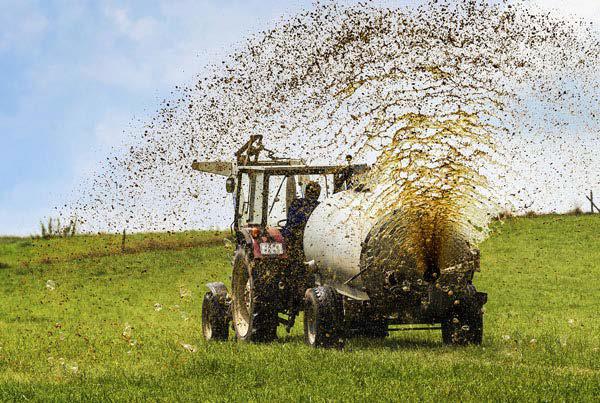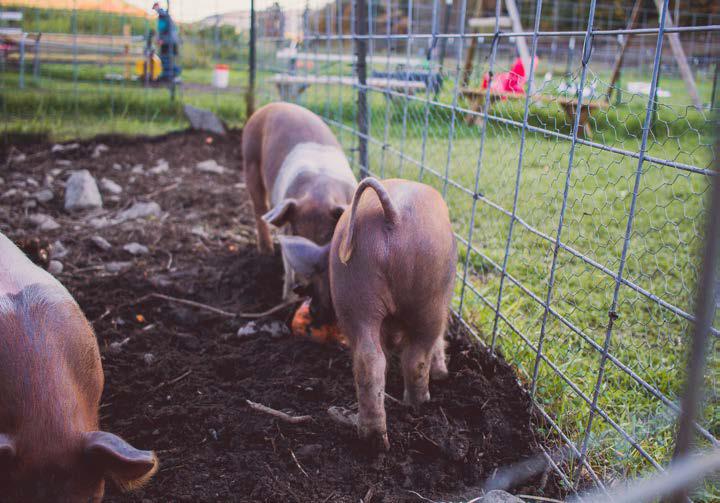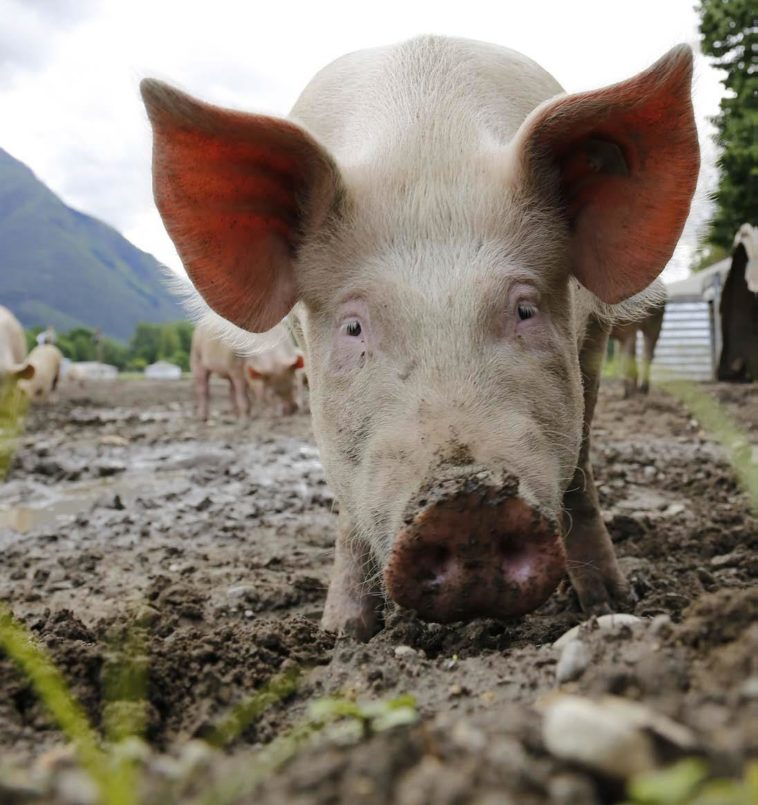An important operation on any pig farm is proper waste management. The manure produced in the piggery can cause many problems if not managed effectively. If sound waste management principles are followed, it can increase the productivity and profitability of your pig farm.
During the structural planning of a new piggery, or the expansion of an existing structure, careful consideration must be given to the specific waste management system that will be implemented. Farmers generally tend to dispose of the waste in a liquid or semi-liquid form, known as slurry.
There are two options for removing the waste from the pens easily and effectively. The housing can be constructed with a slatted floor that covers a storage lagoon where all the waste can flow into. Alternatively, the housing can be constructed with sloping floors that lead to waste channels. These channels flow into a waste storage pit away from the housing.
Regardless of the design, the principle remains that the waste should be drained away from the pigs to prevent infectious disease from spreading in the piggery.
During the initial planning as to the location of the piggery and its waste disposal area, the following aspects have to be kept in mind:
- If more than 250 pigs (excluding suckling piglets) are being kept, it will be necessary to apply for an Environmental Impact Assessment on the proposed piggery and provision for a proper waste handling system must be made. This depends on national legislation.
- The prevailing wind direction must be considered to prevent bad odours which could be a nuisance for neighbours or nearby human dwellings.
- The piggery and the nearby waste storage lagoon shall have no inlet and outlet to storm water facilities, and shall also not be situated in a floodplain or wetland area.
- The soil type must be known to prevent contamination of underground water sources.
In order to convert manure into profit, farmers have two options. Farmers that have pastures can save money on fertiliser by spreading the slurry onto the pastures. Farmers can also use the slurry to produce biogas that will save energy costs.

Farmers can use the liquid slurry as a cheap, natural fertiliser on their fields and pastures to prevent the build-up of manure on the farm. Photo: lawncareacademy. com
Spreading slurry on pastures
Slurry can be successfully utilised on a variety of pastures, including Kikuyu, Smutsvinger, Eragrostis, Fescue, Paspalum and Buffalo grass. These pastures are often used for livestock production.
If the farmer intends to spread liquid slurry onto the pastures, the following aspects should be considered:
- The total area to be irrigated, the right kW tractor and right slurry tanker/spreader.
- An appropriate secondary tractor in the case of a mechanical breakdown, mud congestions or an accident.
- A detailed record kept of the total quantity of slurry spread per hectare per month.
- Annual soil sample analysis of the camps that are irrigated as well as sporadic nutrient analysis of the pastures to determine trends, pH values, deficiencies, or excess levels.
- Regular monitoring of the water quality of adjacent boreholes.
Provided that the farmer keeps these aspects in mind, and applies sound management principles, using slurry instead of fertiliser will greatly decrease costs on the farm.

Producing biogas to save energy costs
Energy shortages coupled with the escalating costs of energy and concerns about climate change, are creating new opportunities for piggeries to exploit biogas as a potential new revenue stream. Most of the energy available in piggery waste can be captured in the form of methane.
A bio-digester is a bioreactor in which pig manure and wastewater is contained, heated, and mixed with water. Microorganisms feed on the waste and release biogas which is mainly methane (60 to 70%), and carbon dioxide (30 to 40%). Through a process of carefully extracting the carbon, hydrogen and oxygen, up to half of the mass of the waste can be converted into biogas.
A biogas power plant will allow the farmer to use biogas for the energy needs of his farm and save on energy costs in the process. Although there is an initial capital expense to set up a biogas power plant, the money saved over time will ensure that the farmer will be able to recover these costs. This will allow farmers who are often subjected to an unreliable electricity supply to keep operating regardless of the condition on the national electricity supplier.
ProAgri BZN acknowledges the contribution of the author, Mr Andrew Taylor, on Biogas Production and Slurry Management and Dr Danie Visser (Editor) for making the relevant information in the book: Modern Pig Production (2014) available to our readers in Botswana, Namibia & Zimbabwe. Source: Modern Pig Production (2014), published in association with Kejafa Knowledge Works. ISBN 978-0-6206112-3-7. pp 543.









